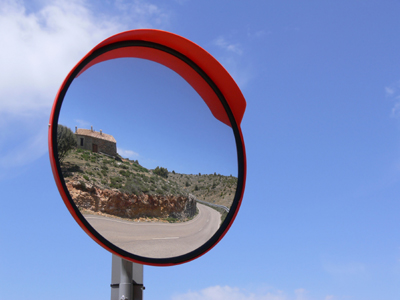Reflection occurs when any wave reaches a boundary between two different media. The amount of reflection depends on the nature of the medium that the wave is hitting. In senior high school, you will have studied this only for light waves, but what you have learned about light reflection is equally applicable to any wave.
All waves follow the laws of reflection, so make sure you revise them well. In the exam, stay calm if you come across a question that asks you about the reflection of water waves, earthquake waves, radio waves or sound waves. Simply pretend they are light waves and that should help you find the answer.
OK, lets think about light waves now. When light hits an opaque surface, some of the energy it carries is reflected and some is absorbed.
Smooth shiny surfaces reflect the most and you can see an image in them. Rough surfaces tend to scatter the light in all directions and no image is formed. Dark surfaces reflect less than light surfaces as they absorb more of the energy of the light wave. But what happens if the light hits a transparent surface?
The answer is that a small amount is reflected but the rest travels into the transparent object. If the light hits the surface at an angle of incidence of 0° (in other words, traveling along the normal) it will continue in a straight line. If it hits at an angle of incidence of between 0° and an angle called the critical angle, it will change direction (bend). This is what we call refraction. We say the light has been refracted. Just to complicate matters, if it hits the surface at the critical angle, it will travel along the surface and if the angle of incidence is greater than the critical angle, it will reflect. Phew, that's a lot more to remember than with reflection!
Refraction happens because light travels at different speeds in different media. When it enters a more dense medium, it slows down and bends towards the normal. If it enters a less dense medium, it speeds up and bends away from the normal. The amount of bending is predictable and depends on a property of a transparent object known as the refractive index. The refractive index can be calculated in two ways by carrying out some experiments. The first is to measure the critical angle of the medium. To do this, the angle of incidence of a light ray is changed to find the exact point that it neither reflects nor refracts. The refractive index is then calculated as being the reciprocal of the sine of the critical angle. The alternative method is to use several different angles of incidence and measure the corresponding angle of refraction. Dividing the sine of the angle of incidence by the sine of the angle of refraction gives the value of the refractive index.








